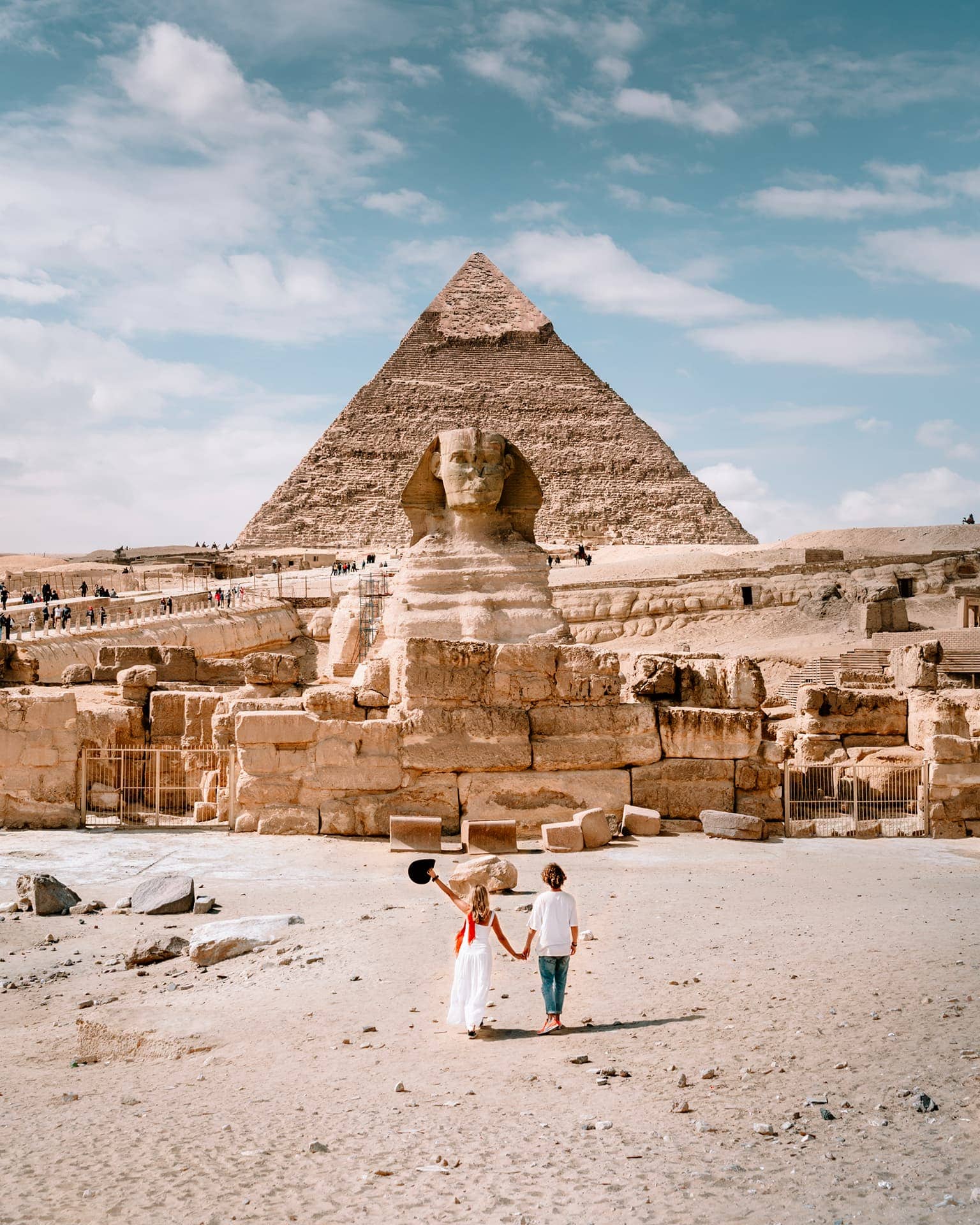Mastabat al-Fir'aun, also known as the Mastaba of Pharaoh, is an ancient Egyptian tomb complex located in Saqqara, Egypt, dating back to the Fourth Dynasty of the Old Kingdom (around 2600 BCE). Here are more detailed insights into this historical site:
1. **Purpose and Construction**: Mastabat al-Fir'aun is believed to have been constructed as a funerary monument and burial place for a high-ranking official during the reign of Pharaoh Shepseskaf, the last ruler of the Fourth Dynasty. The structure is designed in the form of a mastaba, a type of flat-roofed rectangular tomb that predates pyramid construction.
2. **Architectural Features**: The complex consists of a large limestone mastaba-like superstructure built atop a subterranean burial chamber. The exterior of the structure is faced with smooth, Tura limestone, which gives it a distinct appearance.
3. **Design and Layout**: Mastabat al-Fir'aun has a rectangular base and sloping sides, typical of mastaba tombs. It measures approximately 99 meters (325 feet) in length and 74 meters (243 feet) in width. The structure rises to a height of about 18 meters (59 feet).
4. **Interior Burial Chamber**: Beneath the mastaba structure, a deep shaft leads to the burial chamber. The chamber is made of granite and likely housed the sarcophagus and funerary goods of the individual for whom the complex was built.
5. **Purpose and Symbolism**: The construction of Mastabat al-Fir'aun reflects the continuation of royal mortuary practices from the earlier dynasties. The monument served as a means to ensure the eternal preservation of the deceased's spirit and as a place for ongoing rituals and offerings by family members and priests.
6. **Historical Significance**: Mastabat al-Fir'aun is significant as one of the earliest known large-scale mastaba structures in Egypt and represents the transition from mastaba tombs to pyramid complexes that became prevalent in later dynasties.
7. **Excavations and Discoveries**: Archaeological excavations at Mastabat al-Fir'aun have revealed inscriptions and artifacts, providing valuable insights into the religious beliefs and burial customs of the Old Kingdom period.
8. **Tourism and Conservation**: Today, Mastabat al-Fir'aun is open to visitors as part of the Saqqara archaeological site. Efforts are made to preserve and protect the monument to ensure its historical and cultural significance for future generations.
In summary, Mastabat al-Fir'aun is a notable example of ancient Egyptian funerary architecture, representing the early developments in monumental tomb construction before the era of pyramid building. The site contributes to our understanding of the religious and funerary practices of ancient Egypt during the Old Kingdom period.
The Mastaba of Shepseskaf, attributed to Pharaoh Shepseskaf of the Fourth Dynasty, is an intriguing archaeological discovery located in Saqqara, Egypt. Here's a summary of the discovery and significance of this mastaba tomb:Identification: The Mastaba of Shepseskaf was identified as the possible burial place of Pharaoh Shepseskaf based on inscriptions and archaeological evidence found at the site.Location: The mastaba tomb is situated within the Saqqara necropolis, a vast burial ground that served as a royal and elite cemetery during ancient Egypt's Old Kingdom period.Discovery: The discovery of the Mastaba of Shepseskaf was part of ongoing excavations and surveys conducted in Saqqara by archaeologists and Egyptologists. The identification of the mastaba as Shepseskaf's tomb was based on the presence of inscriptions and architectural features typical of royal tombs.Archaeological Features: The mastaba likely exhibits typical Fourth Dynasty architectural characteristics, including a rectangular structure with sloping sides and a subterranean burial chamber. These features align with the style of royal tombs constructed during Shepseskaf's reign.Significance: The discovery of Shepseskaf's mastaba adds to our understanding of the pharaoh's reign and the mortuary practices of the Fourth Dynasty. It provides insights into ancient Egyptian funerary traditions and the importance of Saqqara as a royal burial site.Excavations and Research: Continued excavations and research at the Mastaba of Shepseskaf aim to uncover more details about the tomb's construction, layout, and any artifacts or inscriptions that may shed light on the pharaoh's life and afterlife beliefs.Tourism and Preservation: While access to the Mastaba of Shepseskaf may be restricted due to ongoing archaeological work and conservation efforts, the site holds potential for future exploration and educational purposes
 English
English











